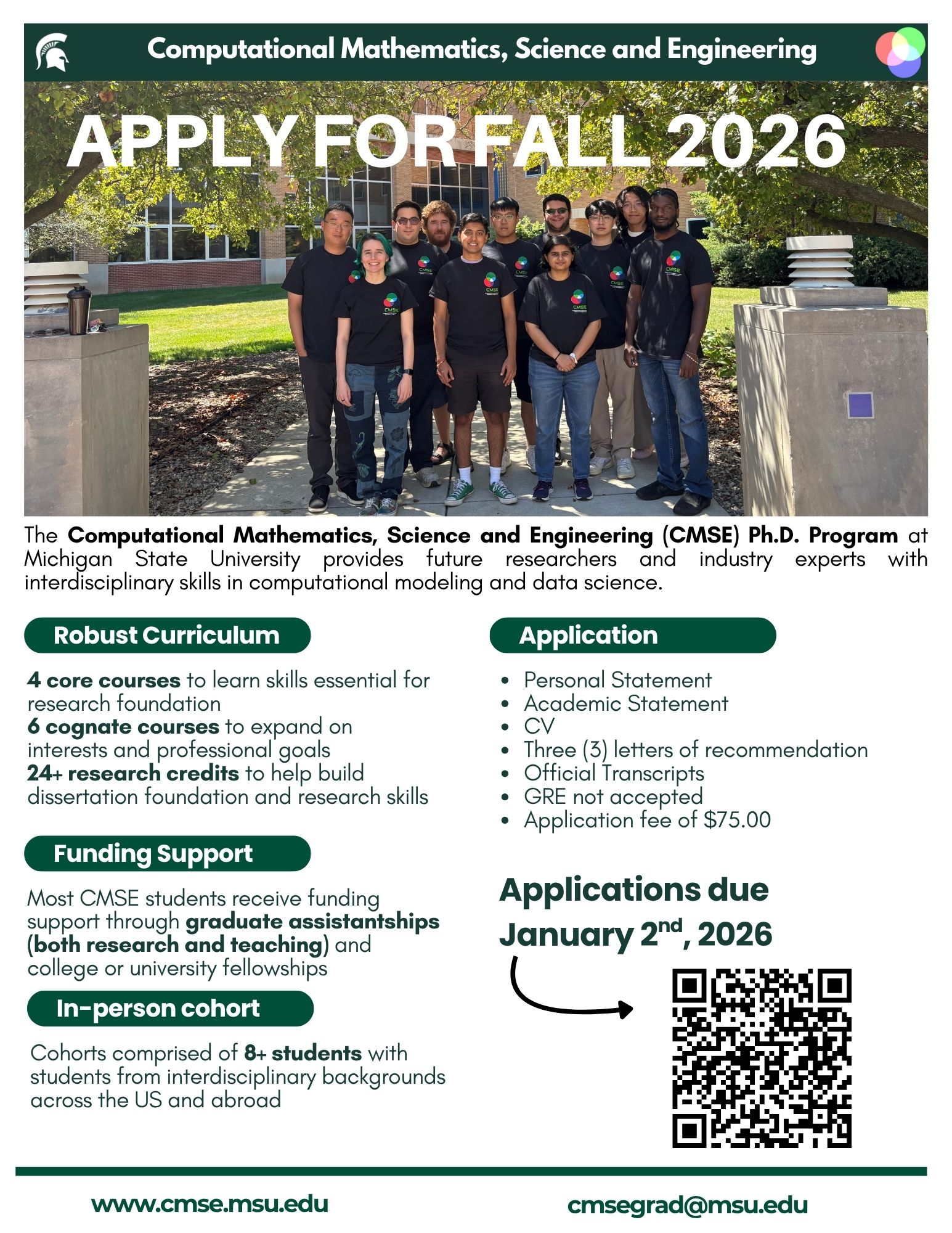Dissertation Defense of CMSE Jonathan Burkow
Department of Computational Mathematics, Science & Engineering
Michigan State University
Dissertation Defense Notice
Tuesday, March 26, 2024, 9:30am (EST)
CMSE Room 1502
https://msu.zoom.us/j/92312292439
Meeting ID: 923 1229 2439
Passcode: Burkow326
HIGH RECALL DEEP LEARNING METHODS FOR PEDIATRIC RIB FRACTURE DETECTION
By
Jonathan Burkow
Abstract:
Numerous data-driven, machine-learned models have been developed to localize pathologies in medical images. This work focuses on model development for the application of rib fracture detection in pediatric radiographs. Child abuse leading to physical harm is a severe problem, with over 100,000 confirmed instances in the United States during 2020, and children under 3 having higher susceptibility for fatal outcomes. Rib fractures are the most prevalent fracture site observed in young children with a near 100\% positive predictive value if discovered. However, the detection of rib fractures in pediatric radiographic scans proves an arduous challenge, with even specialized radiologists failing to identify up to two-thirds of present fractures upon initial reviews. There are various reasons for this difficulty: fractures can be obliquely oriented to the imaging detector, obfuscated by other structures, incomplete, subtle, and/or non-displaced.
In this dissertation, we curate a custom dataset of 1,109 pediatric chest radiographs that were labeled by seven board-certified pediatric radiologists, yielding 624 fracture-present images. We analyze fracture prevalence patterns within the dataset, stratifying by age groups and examining factors such as fracture sidedness and rib locations. We investigate several methods for improving the sensitivity performance of two one-stage deep convolutional neural network (CNN) object-detection architectures, RetinaNet and YOLOv5. These include testing different input image filtering techniques, model ensembling approaches that combine predictions from multiple models, and a novel "avalanche" decision scheme we developed that dynamically adjusts the acceptance threshold during inference based on the number of fractures already detected.
We examine the performance of these networks using several metrics, including F2 score which summarizes precision and recall weighted toward high-sensitivity tasks. Our best performing model used three ensembled YOLOv5 models with multiple image filters and an avalanche decision scheme, achieving an F2 score of 0.725 ± 0.012. When we conducted an expert inter-reader performance evaluation on the same test set of images, it resulted in an F2 score of 0.732. We then take inspiration from our fracture prevalence analysis to create a domain-specific two-stage detection scheme, reliant on a prevalence-weighted region proposal method. The results demonstrated throughout this dissertation assert that a combination of sensitivity-driving methods yields object detector performance that approaches capabilities of expert radiologists, suggesting these methods may provide a viable approach to help identify these difficult-to-find rib fractures.
Committee Members:
Dr. Adam Alessio (chair)
Dr. Vishnu Boddeti
Dr. Arun Ross
Dr. Yuying Xie



